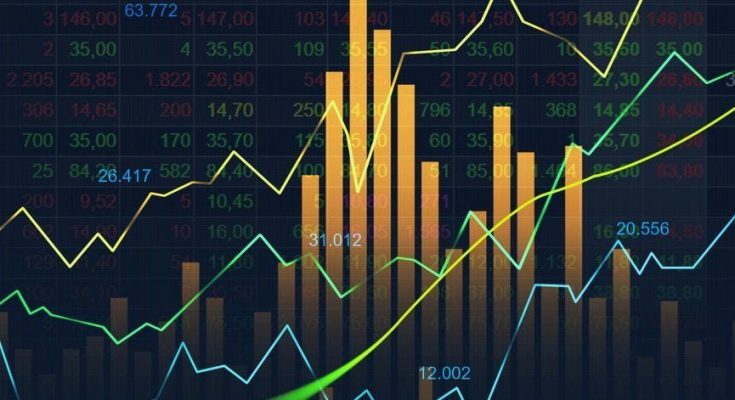Technical analysis is a method of studying the price movements of currencies using various tools and patterns. In this article, you will learn what technical analysis is, why it is important for forex trading, and how to use some of the most common technical analysis tools effectively and avoid common pitfalls.
Introduction
Technical analysis is a method of studying the price movements of currencies using various tools and patterns. Technical analysis assumes that the price of a currency reflects all the relevant information about its supply and demand, and that the price tends to move in trends and patterns that can be predicted and exploited.
Technical analysis can help forex traders in many ways, such as:
- Identifying the direction and strength of the prevailing trend
- Finding support and resistance levels where the price is likely to bounce or break
- Spotting potential reversal and continuation signals
- Measuring the volatility and momentum of the market
- Setting realistic and optimal stop-loss and take-profit levels
- Managing risk and reward ratio
However, technical analysis is not a magic bullet that guarantees success in forex trading. Technical analysis is based on probabilities, not certainties, and it requires a lot of practice, discipline, and patience to master. Technical analysis is also not a one-size-fits-all approach, as different tools and techniques may work better for different time frames, currency pairs, and market conditions.
Therefore, it is important for forex traders to learn how to use technical analysis tools effectively and avoid common pitfalls. In this article, we will explain what technical analysis is, why it is important for forex trading, and how to use some of the most common technical analysis tools effectively and avoid common pitfalls.
What is Technical Analysis?
Technical analysis is a method of studying the price movements of currencies using various tools and patterns. Technical analysis is based on three main assumptions:
- The price reflects all the relevant information about the currency, such as supply and demand, economic and political factors, and market sentiment.
- The price moves in trends and patterns that tend to repeat themselves over time, such as uptrends, downtrends, and ranges.
- The history tends to repeat itself, meaning that the past price behavior can provide clues about the future price direction and potential opportunities.
Technical analysis uses various tools and techniques to analyze the price movements and identify the trends and patterns, such as:
- Trend lines: Straight lines that connect two or more significant highs or lows on a price chart and indicate the direction and strength of the trend, as well as potential support and resistance levels.
- Moving averages: Lines that calculate the average price of a currency over a certain period of time and smooth out the price fluctuations and show the overall direction and strength of the trend.
- Indicators: Mathematical formulas that transform the price and volume data into a graphical representation that can help traders analyze the market conditions and make trading decisions. Indicators can be classified into two categories: trend-following and oscillators.
- Oscillators: Indicators that measure the speed and momentum of the price movements, as well as identify overbought and oversold conditions, such as RSI, Stochastic, CCI, and Bollinger Bands.
- Chart patterns: Recognizable shapes or formations that form on the price chart and indicate the psychology and behavior of the market participants. Chart patterns can be classified into two categories: reversal and continuation.
Why is Technical Analysis Important for Forex Trading?
Technical analysis is important for forex trading because it can help traders in many ways, such as:
- Identifying the direction and strength of the prevailing trend: Technical analysis can help traders determine whether the market is in an uptrend, a downtrend, or a range, and how strong and reliable the trend is. This can help traders decide whether to go long (buy) or short (sell) the currency, and how to align their trades with the trend.
- Finding support and resistance levels where the price is likely to bounce or break: Technical analysis can help traders identify the key levels where the price is likely to encounter buying or selling pressure, and where the price is likely to reverse or continue its direction. This can help traders find the best entry and exit points for their trades, and set their stop-loss and take-profit levels accordingly.
- Spotting potential reversal and continuation signals: Technical analysis can help traders detect the signs that indicate a possible change or continuation of the trend, such as crossover signals, divergence signals, and chart patterns. This can help traders anticipate and capture the market movements and avoid being caught on the wrong side of the market.
- Measuring the volatility and momentum of the market: Technical analysis can help traders gauge the intensity and speed of the price movements, and how likely the price is to continue or change its direction. This can help traders adjust their trading style, risk management, and position size according to the market conditions.
- Managing risk and reward ratio: Technical analysis can help traders evaluate the potential risk and reward of their trades, and how to optimize their trading performance. This can help traders balance their risk and reward ratio, and achieve a consistent and profitable trading outcome.
How to Use Technical Analysis Tools Effectively and Avoid Common Pitfalls
Technical analysis can be a powerful and useful tool for forex trading, but it is not without its limitations and challenges. Technical analysis is not a perfect science, and it does not guarantee success in forex trading. Technical analysis is based on probabilities, not certainties, and it requires a lot of practice, discipline, and patience to master. Technical analysis is also not a one-size-fits-all approach, as different tools and techniques may work better for different time frames, currency pairs, and market conditions.
Therefore, it is important for forex traders to learn how to use technical analysis tools effectively and avoid common pitfalls, such as:
- Relying on too many or too few tools: Using too many tools can lead to confusion, contradiction, and paralysis, as different tools may give different or conflicting signals. Using too few tools can lead to incomplete, inaccurate, or biased analysis, as one tool may not capture the whole picture or account for all the factors. The best practice is to use a combination of tools that complement and confirm each other, and that match the market condition, such as using a trend-following indicator and an oscillator, or using a moving average and a trend line.
- Ignoring the fundamental and sentimental factors: Technical analysis is based on the assumption that the price reflects all the relevant information about the currency, but this may not always be the case. Sometimes, the price may be influenced by external factors that are not reflected in the technical tools, such as economic and political events, news and rumors, and market sentiment. These factors can cause sudden and unexpected price movements that may invalidate the technical signals or patterns. Therefore, it is important for traders to be aware of the fundamental and sentimental factors that may affect the price, and to use technical analysis as a guide, not a gospel.
- Chasing the market or missing the market: Technical analysis can help traders identify the best entry and exit points for their trades, but it can also cause traders to chase the market or miss the market, if they are not careful. Chasing the market means entering the market too late, after the price has already moved significantly in the desired direction, and risking a reversal or a correction. Missing the market means entering the market too early, before the price has confirmed the technical signal or pattern, and risking a false or premature signal. The best practice is to wait for the price to confirm the technical signal or pattern, and to use a reasonable and realistic stop-loss and take-profit level, and to avoid being greedy or fearful.
- Overlooking the context and the perspective: Technical analysis can help traders analyze the price movements and identify the trends and patterns, but it can also cause traders to overlook the context and the perspective of the market, if they are not careful. Overlooking the context means focusing on the short-term price movements and ignoring the long-term price movements, or vice versa, and losing the big picture or the small picture of the market. Overlooking the perspective means applying the same technical tools and techniques to different time frames, currency pairs, and market conditions, and expecting the same results or outcomes. The best practice is to use multiple time frames, currency pairs, and market conditions, and to adapt the technical tools and techniques accordingly, and to have a flexible and open-minded approach.
Conclusion
Technical analysis is a method of studying the price movements of currencies using various tools and patterns. Technical analysis can help forex traders in many ways, such as identifying the direction and strength of the trend, finding support and resistance levels, spotting potential reversal and continuation signals, measuring the volatility and momentum of the market, setting realistic and optimal stop-loss and take-profit levels, and managing risk and reward ratio.
However, technical analysis is not a magic bullet that guarantees success in forex trading. Technical analysis is based on probabilities, not certainties, and it requires a lot of practice, discipline, and patience to master. Technical analysis is also not a one-size-fits-all approach, as different tools and techniques may work better for different time frames, currency pairs, and market conditions.
Therefore, it is important for forex traders to learn how to use technical analysis tools effectively and avoid common pitfalls, such as relying on too many or too few tools, ignoring the fundamental and sentimental factors, chasing the market or missing the market, and overlooking the context and the perspective.





thannks
Hey there, I think your site might be having browser compatibility issues.
When I look at your website in Safari, it looks fine but when opening in Internet Explorer, it has
some overlapping. I just wanted to give you a quick heads up!
Other then that, amazing blog!
Your way of describing everything in this piece of writing is
truly good, every one can effortlessly understand it, Thanks a lot.